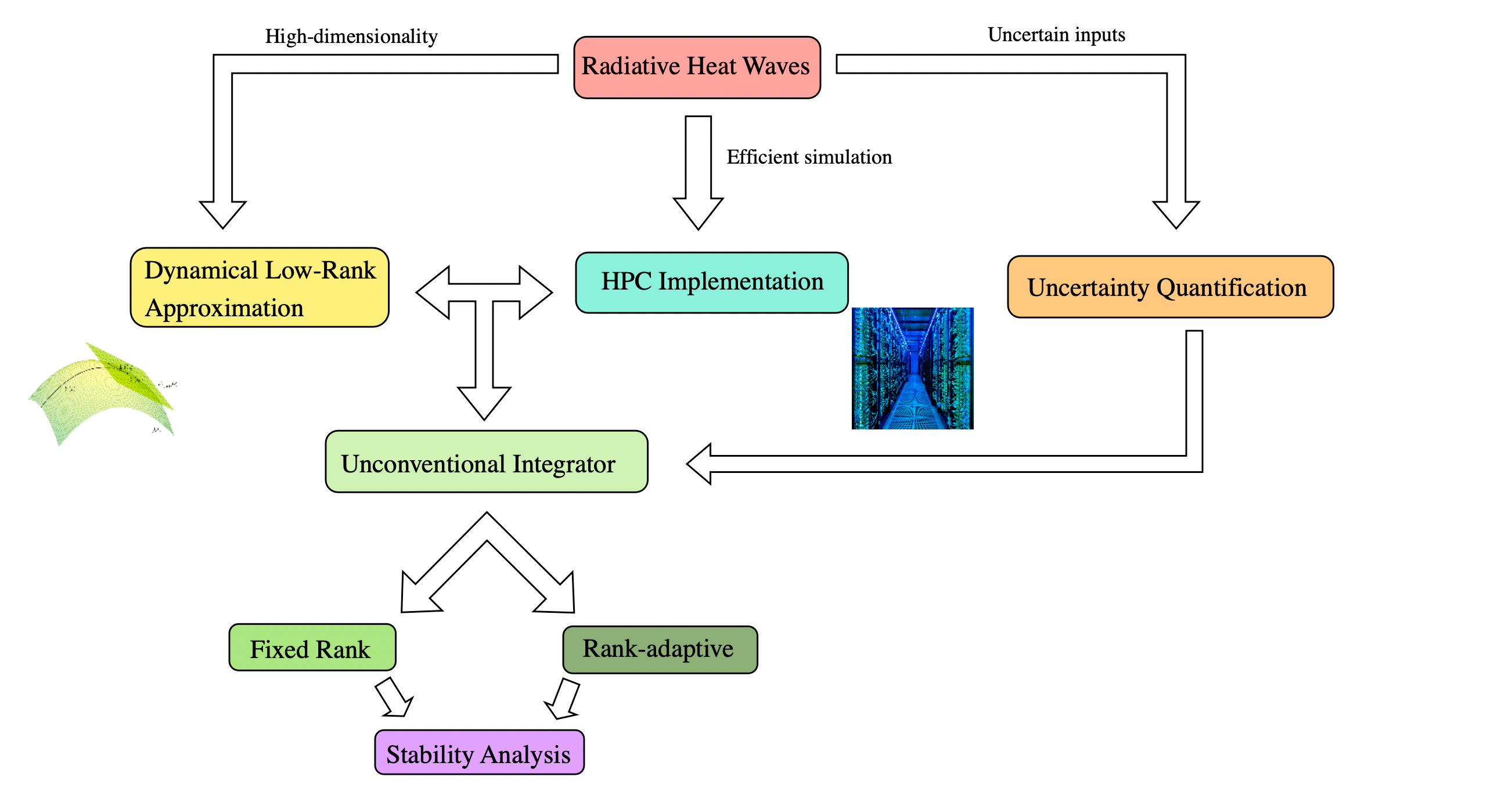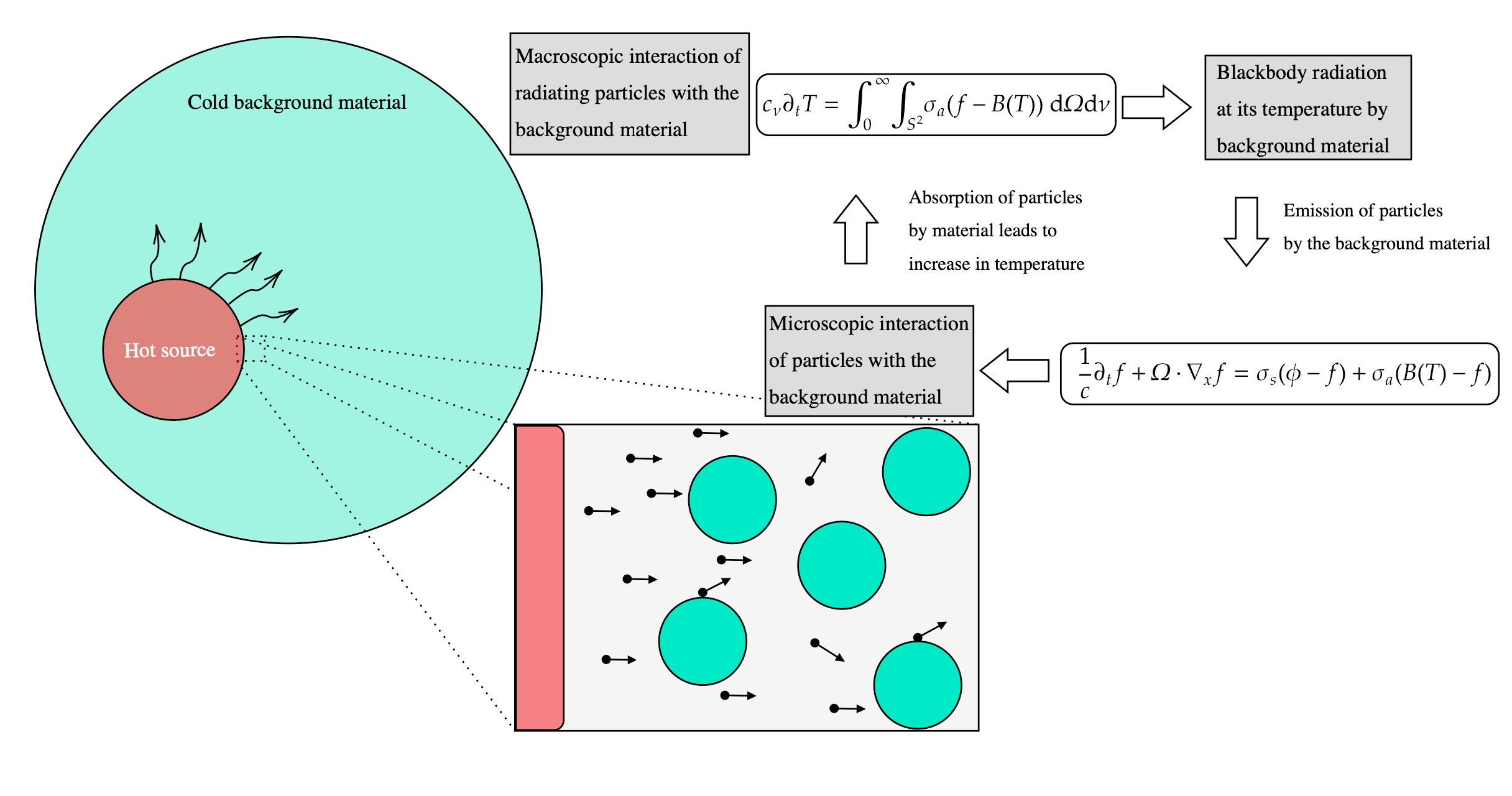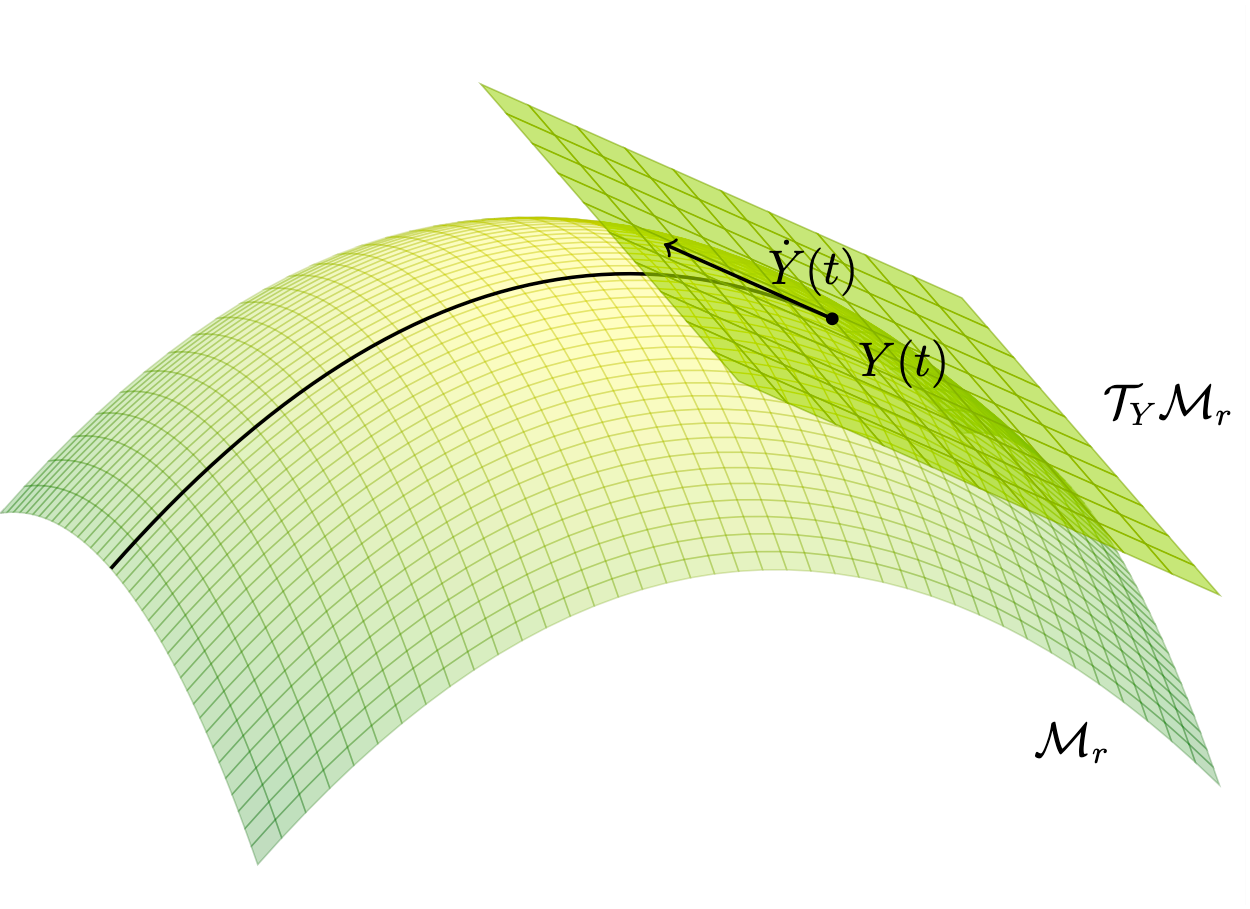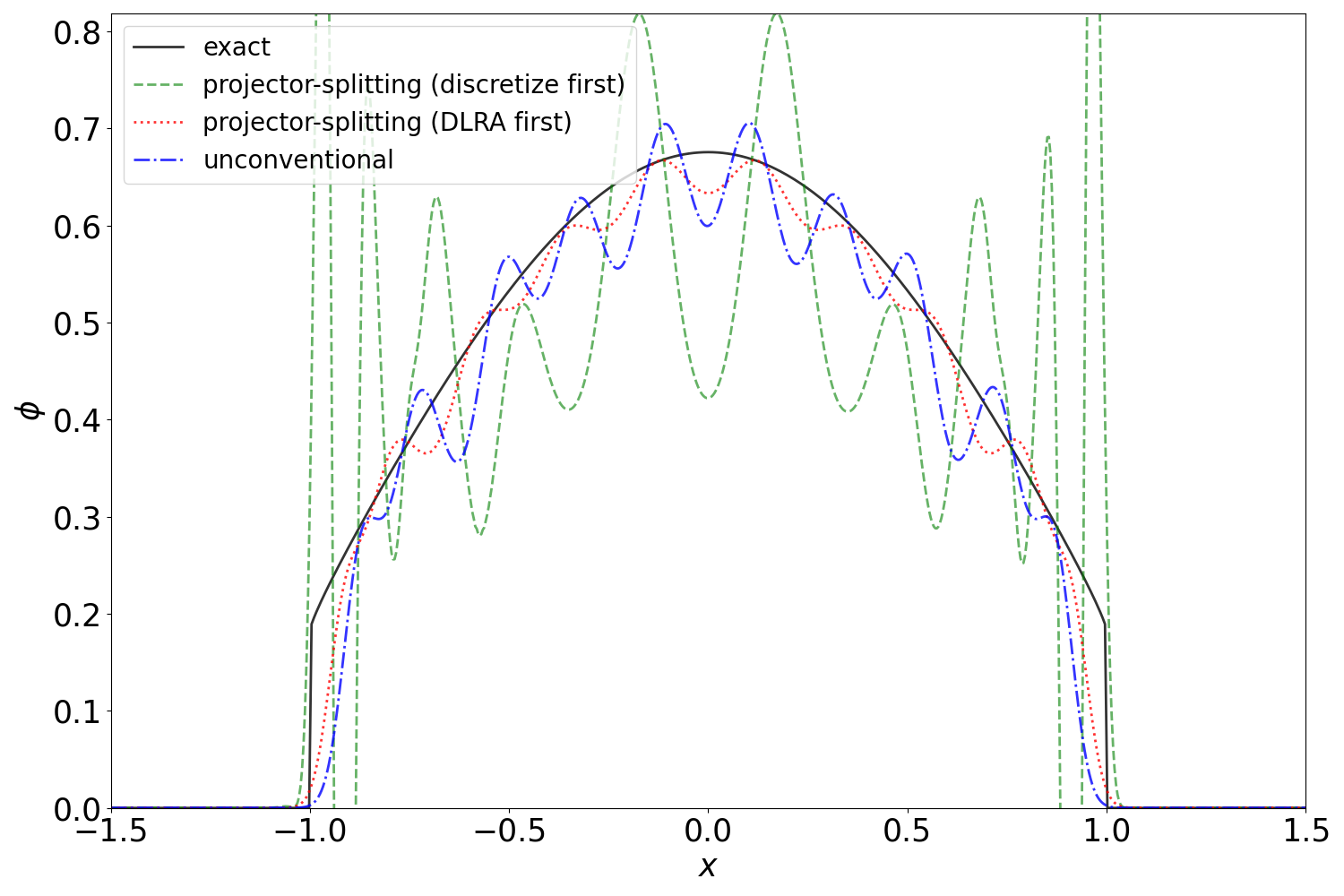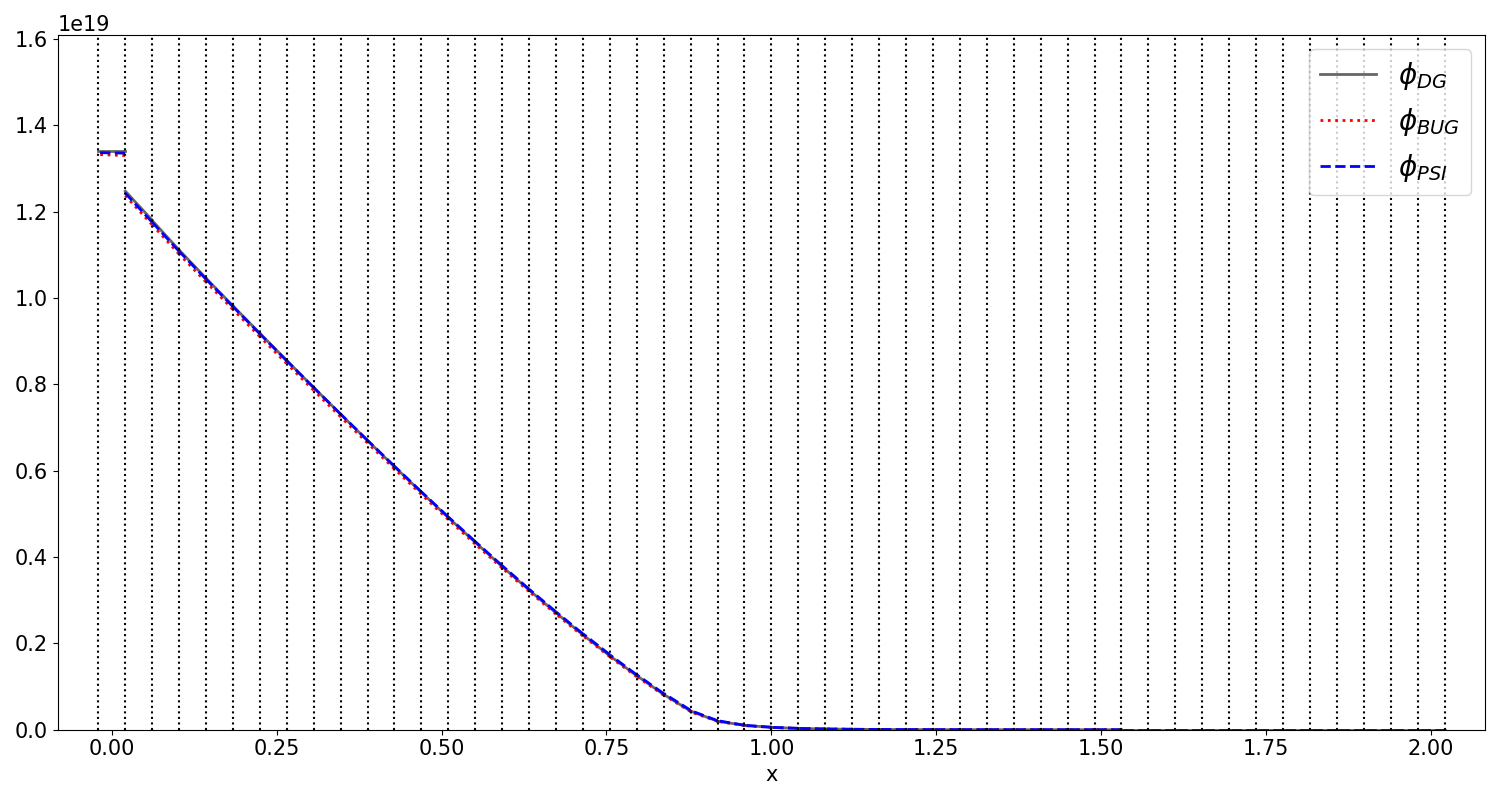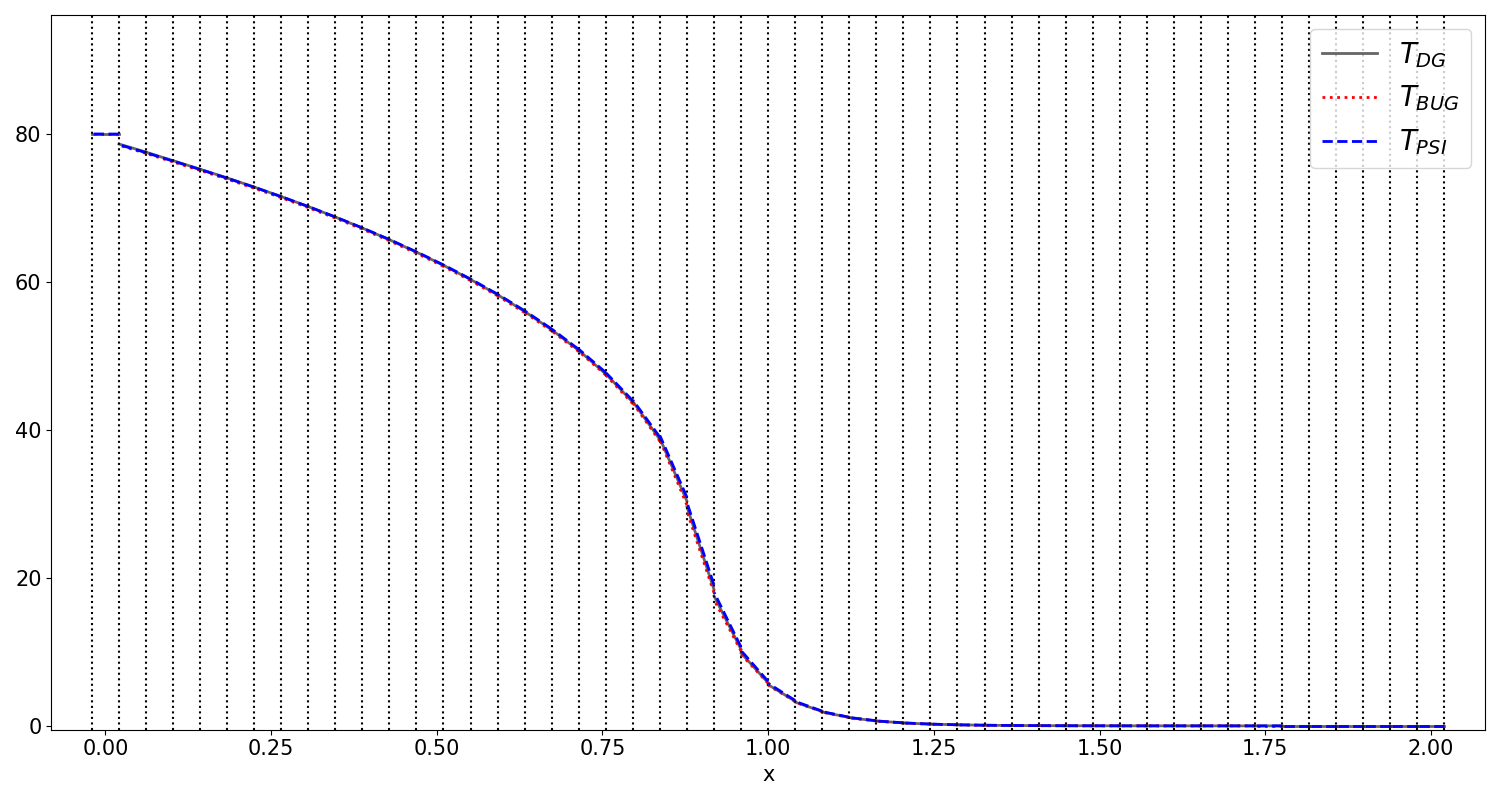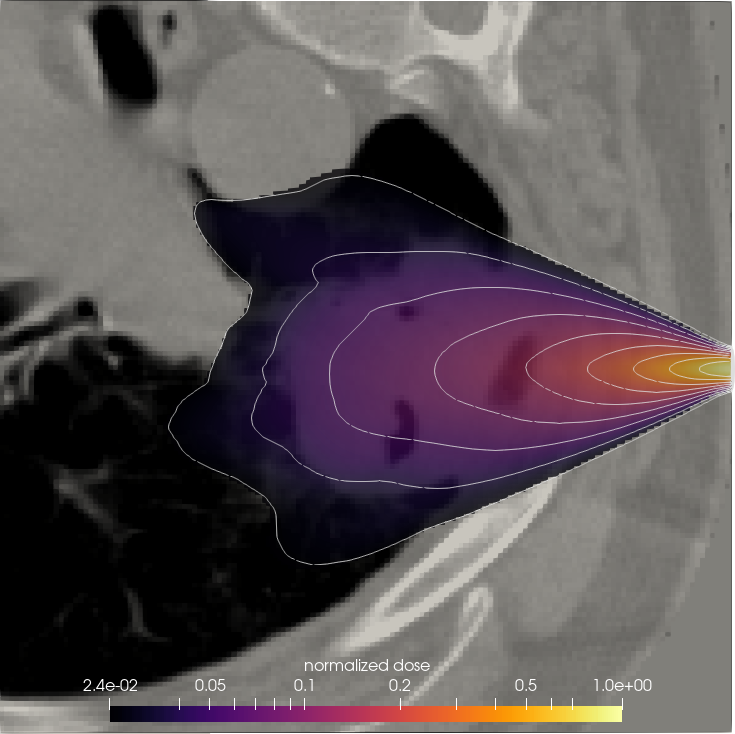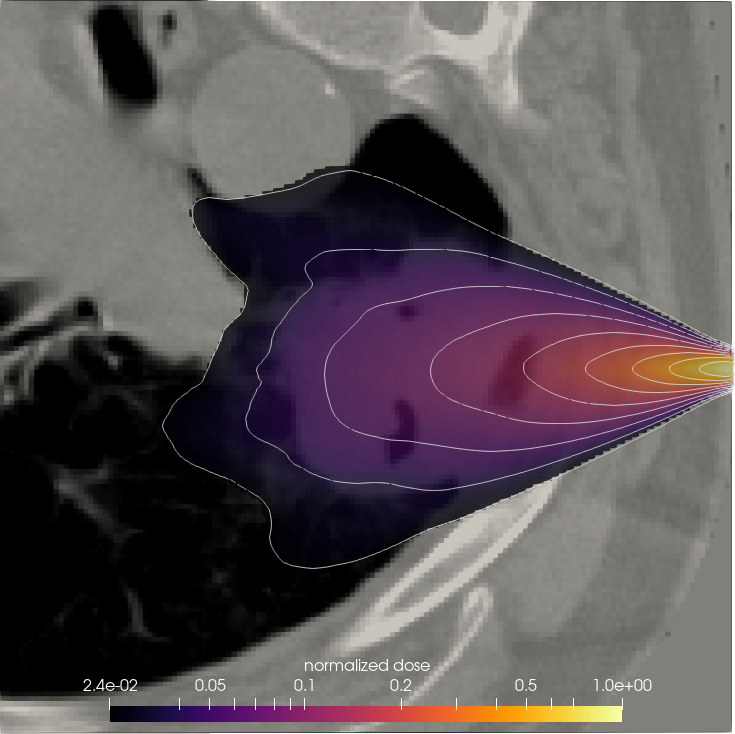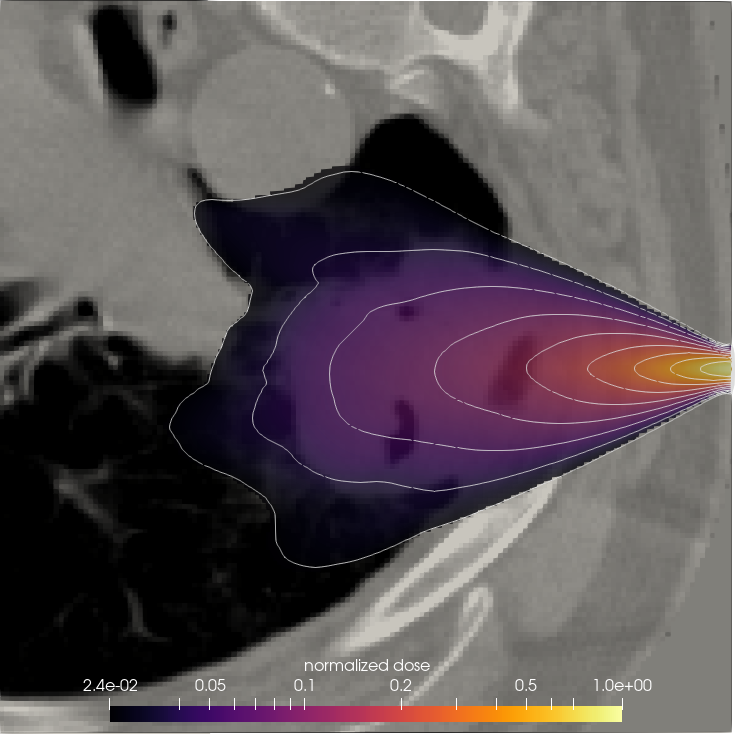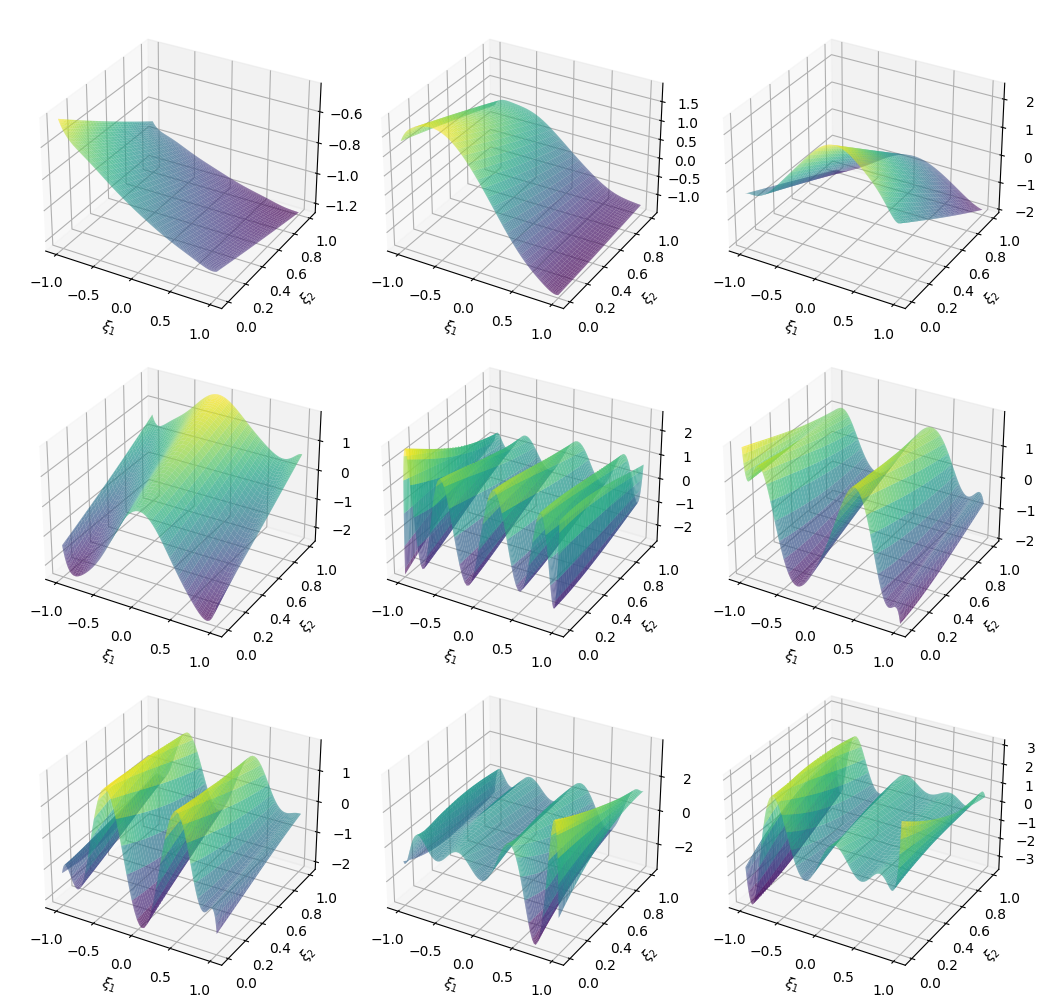Publications
. Asymptotic-preserving and energy stable dynamical low-rank approximation for thermal radiative transfer equations. Multiscale Model. Simul., 23(1):278–312, March 2025. URL https://doi.org/10.1137/24M1646303. [preprint] [files]
. A robust collision source method for rank adaptive dynamical low-rank approximation in radiation therapy. ESAIM: Math. Model. Numer. Anal., 57(2):865–891, March 2023. URL https://doi.org/10.1051/m2an/2022090. [preprint] [files]
. On the stability of robust dynamical low-rank approximations for hyperbolic problems. SIAM J. Sci. Comput., 45(1):A1–A24, February 2023. URL https://doi.org/10.1137/21M1446289. [preprint] [files]
. A low-rank power iteration scheme for neutron transport criticality problems. J. Comput. Phys., 470:111587, December 2022. URL https://doi.org/10.1016/j.jcp.2022.111587. [preprint] [files]
. A rank-adaptive robust integrator for dynamical low-rank approximation. BIT, 62(4):1149–1174, December 2022. URL https://doi.org/10.1007/s10543-021-00907-7. [preprint]
. Dynamical low-rank approximation for Burgers' equation with uncertainty. Int. J. Uncertain. Quantif., 12(5):1–21, March 2022. URL https://doi.org/10.1615/Int.J.UncertaintyQuantification.2022039345. [preprint] [files]
. An unconventional robust integrator for dynamical low-rank approximation. BIT, 62(1):23–44, March 2022. URL https://doi.org/10.1007/s10543-021-00873-0. [preprint]
. Time integration of tree tensor networks. SIAM J. Numer. Anal., 59(1):289–313, February 2021. URL https://doi.org/10.1137/20M1321838. [preprint]
. A low-rank method for two-dimensional time-dependent radiation transport calculations. J. Comput. Phys., 421:109735, 18, November 2020. URL https://doi.org/10.1016/j.jcp.2020.109735.
. Time integration of symmetric and anti-symmetric low-rank matrices and Tucker tensors. BIT, 60(3):591–614, January 2020. URL https://doi.org/10.1007/s10543-019-00799-8. [preprint]
Preprints
. A parallel, energy-stable low-rank integrator for nonlinear multi-scale thermal radiative transfer. CRC 1173 Preprint 2025/9, Karlsruhe Institute of Technology, March 2025. [files]
. Low-rank variance reduction for uncertain radiative transfer with control variates. CRC 1173 Preprint 2025/2, Karlsruhe Institute of Technology, January 2025. [files]
. Dynamical low-rank approximation for Marshak waves. CRC 1173 Preprint 2022/76, Karlsruhe Institute of Technology, December 2022. [files]
Theses
. Unconventional contributions to dynamical low-rank approximation of tree tensor networks. PhD thesis, University of Tübingen, July 2021.
. Realizability-preserving discretization strategies for hyperbolic and kinetic equations with uncertainty. PhD thesis, Karlsruhe Institute of Technology, May 2020.
Other references
. A mass, momentum, and energy conservative dynamical low-rank scheme for the Vlasov equation. J. Comput. Phys., 443:Paper No. 110495, 16, 2021. URL https://doi.org/10.1016/j.jcp.2021.110495.
. Dynamical low-rank integrator for the linear Boltzmann equation: error analysis in the diffusion limit. SIAM J. Numer. Anal., 59(4):2254–2285, 2021. URL https://doi.org/10.1137/20M1380788.
. A quasi-conservative dynamical low-rank algorithm for the Vlasov equation. SIAM J. Sci. Comput., 41(5):B1061–B1081, 2019. URL https://doi.org/10.1137/18M1218686.
. A low-rank projector-splitting integrator for the Vlasov-Poisson equation. SIAM J. Sci. Comput., 40(5):B1330–B1360, 2018. URL https://doi.org/10.1137/18M116383X.
. A projector-splitting integrator for dynamical low-rank approximation. BIT, 54(1):171–188, 2014. URL https://doi.org/10.1007/s10543-013-0454-0.
. Non-intrusive uncertainty propagation with error bounds for conservation laws containing discontinuities. In Uncertainty quantification in computational fluid dynamics, volume 92 of Lect. Notes Comput. Sci. Eng., pages 1–57. Springer, Heidelberg, 2013.
. Adaptive uncertainty quantification for computational fluid dynamics. In Uncertainty quantification in computational fluid dynamics, volume 92 of Lect. Notes Comput. Sci. Eng., pages 151–191. Springer, Heidelberg, 2013.
. Dynamical approximation by hierarchical Tucker and tensor-train tensors. SIAM J. Matrix Anal. Appl., 34(2):470–494, 2013. URL https://doi.org/10.1137/120885723.
. ENDF/B-VII.1 Nuclear Data for Science and Technology: Cross Sections, Covariances, Fission Product Yields and Decay Data. Nuclear Data Sheets, 112(12):2887–2996, 2011. URL https://doi.org/10.1016/j.nds.2011.11.002. Special Issue on ENDF/B-VII.1 Library.
. Dynamical tensor approximation. SIAM J. Matrix Anal. Appl., 31(5):2360–2375, 2010. URL https://doi.org/10.1137/09076578X.
. Multidimensional Quantum Dynamics. John Wiley & Sons, 2009.
. Uncertainty quantification for systems of conservation laws. J. Comput. Phys., 228(7):2443–2467, 2009. URL https://doi.org/10.1016/j.jcp.2008.12.018.
. On solutions to the $P_n$ equations for thermal radiative transfer. J. Comput. Phys., 227(5):2864–2885, 2008. URL https://doi.org/10.1016/j.jcp.2007.11.027.
. From Quantum to Classical Molecular Dynamics: Reduced Models and Numerical Analysis. Zurich Lectures in Advanced Mathematics. European Mathematical Society (EMS), Zürich, 2008.
. Dynamical low-rank approximation. SIAM J. Matrix Anal. Appl., 29(2):434–454, 2007. URL https://doi.org/10.1137/050639703.
. Uncertainty propagation using Wiener-Haar expansions. J. Comput. Phys., 197(1):28–57, 2004. URL https://doi.org/10.1016/j.jcp.2003.11.033.
. Electron done calculations using Method of Moments. Med Phys., 24(1):111–125, 1997. URL https://doi.org/10.1118/1.597920.
. The multi-configurational time-dependent Hartree approach. Chemical Physics Letters, 165(1):73–78, 1990. URL https://doi.org/10.1016/0009-2614(90)87014-I.
. Foundations of Radiation Hydrodynamics. Oxford University Press, New York, 1984.
. Asymptotic analysis of radiative transfer problems. J. Quant. Spectrosc. Radiat. Transfer, 29(4):285–310, 1983. URL https://doi.org/10.1016/0022-4073(83)90048-1.
. Physics of Shock Waves and High Temperature Hydrodynamic Phenomen. Academic Press, 1967.
. Effect of radiation on shock wave behavior. Phys. Fluids, 1:24–29, 1958. URL https://doi.org/10.1063/1.1724332.
. Note on Exchange Phenomena in the Thomas Atom. Mathematical Proceedings of the Cambridge Philosophical Society, 26(3):376–385, 1930. URL https://doi.org/10.1017/S0305004100016108.

